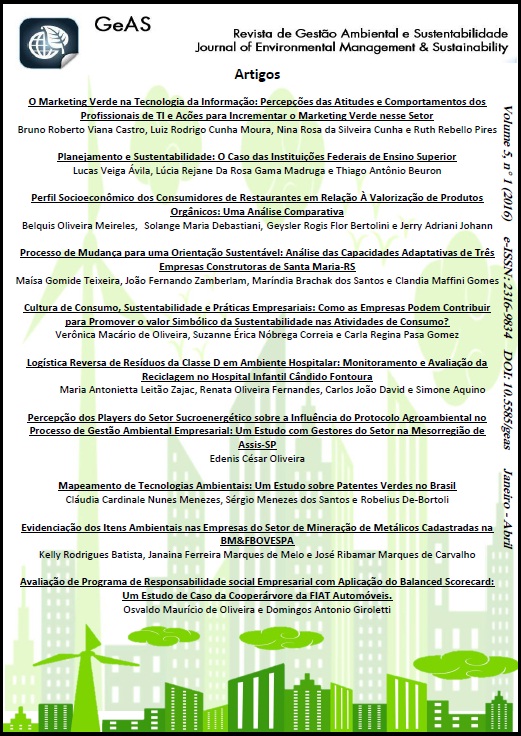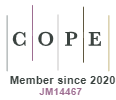Reverse Logistics of Class-D Waste in a Hospital Environment: Monitoring and Evaluation of Recycling in the Cândido Fontoura Children’s Hospital
DOI:
https://doi.org/10.5585/geas.v5i1.326Keywords:
Resíduos de Serviços de Saúde, reciclagem, resíduo comum, papel reciclável.Abstract
The proper segregation of Health Services Waste (HSW) reduces contamination of ordinary waste and the risks to occupational health, besides allowing for the recovering of recyclable materials. Efficient segregation depends on the training and awareness of staff involved in the generation of HSW. Therefore, the objectives of this study were to develop an evaluation model, training and measurement of segregation of common waste, especially recyclable paper, in the administrative sector of the Hospital Cândido Fontoura, located in the city of São Paulo. Monitoring was held for the management routine of ordinary waste and recyclable paper, from June to October (2014). Training through lectures was held so as to raise employee awareness about the importance of proper disposal of waste. The results were obtained by segregation and weighing of recyclable waste paper and ordinary waste. Three samples were considered: before sensitization (Before); after sensitization (After); with daily monitoring in the sector (Accompanied). The period for evaluation per sample was nine days (n = 9). The statistical test was applied (analysis of variance), as well as the Kruskal-Wallis test (α < 0.05) for the weights of the samples, that which were considered significantly different (p = 0.0034). The Before sample (6.2 ± 2.9 kg) was considered heavier. There was no significant difference between the samples After (3.0 ± 1.7 kg) and Accompanied (2.8 ± 1.5 kg) being considered similar. The amount of recyclable paper evolved inversely to the common residue, 3.7 ± 0.2 kg (Before) to 6.7 ± 3.1 kg (Accompanied) demonstrating the effectiveness and proper recycling HSW.Downloads
Downloads
Published
2016-04-01
How to Cite
Zajac, M. A. L., Fernandes, R. O., David, C. J., & Aquino, S. (2016). Reverse Logistics of Class-D Waste in a Hospital Environment: Monitoring and Evaluation of Recycling in the Cândido Fontoura Children’s Hospital. Revista De Gestão Ambiental E Sustentabilidade, 5(1), 78–93. https://doi.org/10.5585/geas.v5i1.326
Issue
Section
Artigos
Views
- Abstract 1158
- PDF (Português (Brasil)) 629










